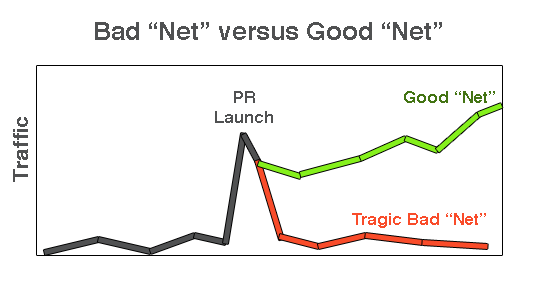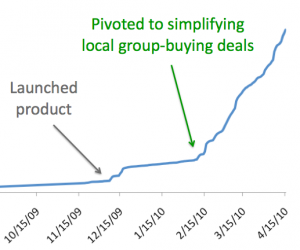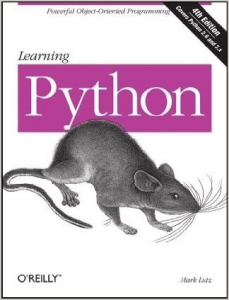The Shortcut We Took to Build Yipit in Three Days
December 20, 2010 | Comments | Uncategorized
Vinicius Vacanti is co-founder and CEO of Yipit. Next posts on how to acquire users for free and how to raise a Series A. Don’t miss them by subscribing via email or via twitter.
Family, friends, journalists, potential investors and palm readers will tell your idea is brilliant or foolish but they don’t really know. Very few ideas are clearly amazing. The success of most ideas is very much unclear.
So, how can you find out if your startup idea is good or bad?
Fortunately, there are people out there who can definitively tell if your idea is good or bad. They are brutal, selfish and don’t really know what they want. But, if you put a version of your startup idea in front of them, they’ll either use it or quickly lose interest.
Those people are your potential users. The people whose problem you’re solving and they alone, through their action or inaction, will tell you if your startup idea is good or bad.
The problem is that it takes months to get a working prototype ready. Well, not if you are ready to take a few shortcuts.
 The Idea
The Idea
In late January of this year, we had noticed two things: people loved Groupon and there were, at that point, around 15 competing daily deal services of which 7 had launched in the last 30 days.
The problem we identified was two-fold: people didn’t want to sign-up for all these new deal services getting 15 emails a day and didn’t want to keep getting deals that weren’t relevant to them (e.g., guys didn’t want spa deals).
We wanted to create a product that would allow users to tell us what kind of deal categories they wanted (restaurants, not spas), every day we would grab all of these new daily deals announced in their market, filter the deals based on the user’s preferences and email the best ones in just one email.
How We Tested It
We could have sat around for a few months asking people what they thought, writing a business plan, modeling out what it would like in five years, thinking about where our headquarters would be, and other irrelevant things.
Or, we could create a very simple prototype as fast as possible. We could see if potential users would sign-up. And, if they did, whether they would open our daily emails, click on the deals or just unsubscribe from our emails.
Building a Prototype in Three Days
We had a long list of features we wanted for Yipit but we cut everything except for the bare minimum:
- Landing page to sign-up
- Page to collect category preferences
- Page to recommend Yipit to others
- Page where you could see all of the deals in our system
In retrospect, we could have done without creating the page where a user could browse all of the current deals.
On the back-end, we needed:
- Script that would send out a daily email with the deals that matched their preferences
- Crawler to grab all the deals from the various sites and put them in our database
All of the above is actually very easy to build. The only problematic one was the crawler to grab the deals from the various third-party sites. Each site was different, the urls were weird, duplicate deals would be a problem and categorizing the deals accurately is a hard problem to solve. We quickly realized the crawler was going to take us weeks to build poorly and months to build correctly.
But, what we concluded was that the whether we could build the crawler wasn’t a risk. We could; it would just take time. The real risk was that people didn’t want to use our service.
The Shortcut
So, we said, screw it, we’re not building a crawler. We’re just going to do the deal entry manually and eventually build the crawler if people actually liked our new service.
We created a simple admin page where a deal could be entered in (title, picture, price, etc.). We then hired a part-time person who would wake up every morning, go to the 20 daily deal sites and manually type the deals into our system and assign them to categories like restaurants, massage, spa, etc. Crazy? Yes. Scalable? Probably not. Did it matter? No.
Finding Out If Our Idea Was Bad
Three days later, we were ready to put our prototype in front of potential users. Much to our delight, people started signing-up and started getting and clicking on our email. They were implicitly telling us they liked our idea! (I’ll write a future post on how to get these early users but basically you get them wherever you can. You don’t need that many to know if your idea is good or bad).
If people hadn’t signed-up or hadn’t clicked on our emails, we would have found out right away that there was something wrong with our idea. But, that would have been okay because we hadn’t spent months on it; just a few days.
How to Find Out if Your Idea is Good or Bad
My main pieces of advice are:
- Build a very simple prototype for your idea and get it in front of potential users. You’ll learn more the day you talk to your first user than the months you’ve spent pontificating
- Don’t be afraid to do things manually at first like we did
- Build a landing page with screenshots that describe your future product and see if people will sign-up for your invite list. Dropbox did that before they had a product and signed-up 100K people. Clearly, they were solving a problem people had!
- Cut every feature except for the core feature. Seriously, you don’t need any of those extra features.
- 95% of startups are able to have a prototype built in less than two weeks.
- Don’t write a business plan.
It’s very likely your idea is bad. Find that out as soon as possible so you can evolve it to a better idea.
Like working with big data sets?
We’re aggressively expanding YipitData and looking for:
- Data analysts (consultants, financial analysts)
- Data product managers (technical and can work with analysts and engineers to build a system)
- Data engineers (can build complicated systems to collect and process very large data sets)
Email me personally and we’ll meet up! I’m at vacanti at gmail dot com
Vinicius Vacanti is co-founder and CEO of Yipit. Next posts on how to acquire users for free and how to raise a Series A. Don’t miss them by subscribing via email or via twitter.



















